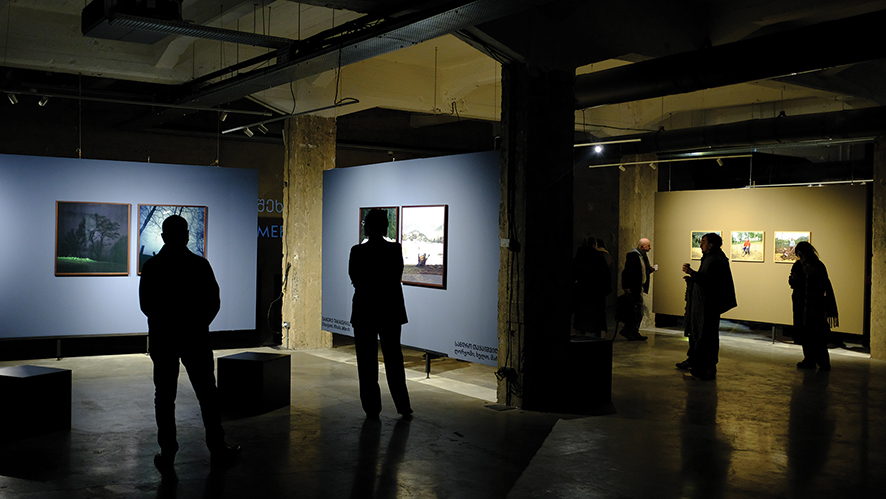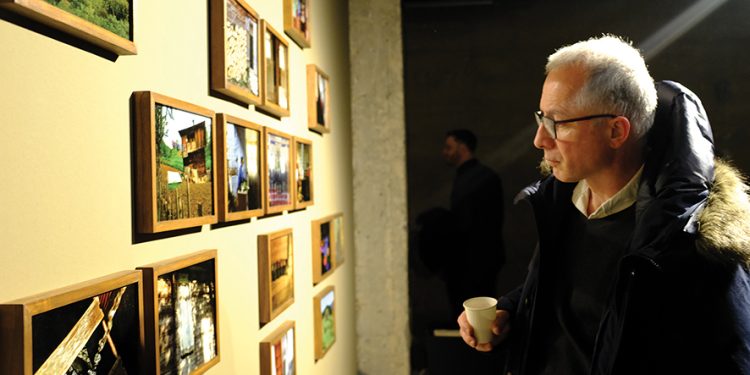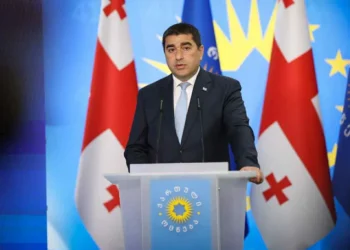Meeting Point: Mountains is an open exhibition for people in Tbilisi to discover the different cultures and towns of mountainous Adjara through the eyes of photographers and researchers.
The exhibition launched its debut at the Tbilisi Photography and Multimedia Museum on January 17. The project is based on a residency program that involved various artists, researchers, and anthropologists. Mountainous Adjara was chosen as the location for the 2023 residency, since many people don’t know much about the region, Ana Gabelaia, curator of the event, told GEORGIA TODAY.
“When we hear Adjara, instantly we imagine the seashore- Batumi, Kobuleti, and other popular tourist destinations, but actually most parts of Adjara are totally different from what it is near the sea,” she said.
Gabelaia has been a curator for ten years, and the main curator of educational and artistic programs at the Tbilisi Photography Museum for the past year and a half. The Tbilisi Photo Festival, a sister organization to the museum, was the initiator of the residency program. Gabelaia said the contributors were sent to Adjara to document what they saw, did, and felt, in their medium of choice.
In villages throughout Adjara, such as Khula, Gabelaia said there are mainly Muslim communities, so the traditions and culture there are different from other parts of Georgia. They wanted this to be captured, along with the different seasons of Adjara, because life is lived differently depending on the time of the year. The contributors had their choice of location within the region and the season in which to travel.
Davis Kanepe is a photographer from Riga, Latvia, who participated in the residency. His roots are in filmmaking, so this project served as his opening act in the world of photography. He spent the entire month of August in Khulo, where he unexpectedly discovered the theme of his project.
“I really was a bit surprised that there are no common meeting spaces or venues or concert halls or something in any of these villages, so people are just visiting each other at home,” Kanepe told us. “For me as a foreigner, it was very interesting to try to find how to interact with the locals.”
His exhibition, entitled “Third Places,” came from the idea of having another place that one regularly goes, to meet and interact with people. Kanepe said that he noticed the places where people meet are as diverse as their identities, and this idea was especially intriguing to him because of his work in Riga. At home, he runs a culture center, so it piqued his interest when he saw people meeting in places outside of a traditional meeting spot.

The “third places” as described through photos in his exhibition are The Bar (Khulo), The Hotel (Tago), The Mosque (Ghorjomi), The Lake (Green Lake), The Resort (Beshumi), and The Horse (Photo Saloon). During Kanepe’s time there, he said his “third place” was the newspaper kiosk, for it was there he met many young people who told him stories. However, one of the most touching parts of his experience was when he discovered a local photographer who had recently passed away, Bidzina Rizhvadze, through the stories of the man’s grandson, and Kanepe was able to recreate some of his work.
Looking forward, Kanepe said he wants to create a space for people to meet and come together in Khulo, so they have a common meeting place. He believes it would serve as a motivation for young people to come back to the villages, since they would be able to interact with others and be a part of something. Kanepe also wants to bring his exhibition to Khulo, so the people there can see what they are a part of.
“One part of this project is about discovering parts of Georgia that in Tbilisi or other regions are less well known, but from the other point of view, I think it would be a reflection on the local communities with them together, seeing themselves as the heroes or characters in this story,” Kanepe said. “It might really uplift their self-esteem or their identity, which they should continue to preserve.”
In addition to the residencies in Adjara, Gabelaia said the Tbilisi Photo Festival is opening visual education centers in remote places throughout Georgia. There are currently two that are open, and the Photo Festival is coordinating with local organizations and people to create a photo book library from people and places around the world. According to Gabelaia, these educational centers will serve as a hub for activities, among them photography courses for youth and local business owners, so they know how to photograph and create commercials for their businesses.
The exhibition has a total of nine contributors: Nestan Abdushelishvili (Georgia), Tinatin Bregvadze (Georgia), Tatia Dvali (Georgia), Davis Kanepe (Latvia), Nini Khuroshvili (Georgia), Sandro Khutsishvili (Georgia), Sandro Sulaberidze (Georgia), Giorgi Shengelia (Georgia), and Sandro Takaishvili (Georgia). The exhibition also displays photographs of the Adjarian seaside taken by Anri Tabagua, a photographer who passed away in 2023. The entire exhibition will be on display in the museum until February 10, and is free to enter.
The residency program was run in coordination with Magic Carpet, a European institution that Georgia has partnered with for at least four years. It was also supported by the Embassy of the Kingdom of Netherlands in Georgia.
Gabelaia said the residency location for 2024 will be revealed in March, and until then they will continue to work in Adjara while building their next residency program. This exhibition was curated at the Photography and Multimedia Museum because the Tbilisi Photography Festival wanted to share what they learned during this past year with the Tbilisi community.
“It’s what we do, besides exhibiting, because it’s a nice way to communicate with artists and also create ambassadors – they are the mediums between us and the communities that we are interested in and want to work with in the future.”
By Shelbi R. Ankiewicz














